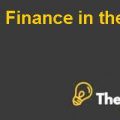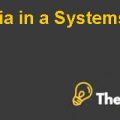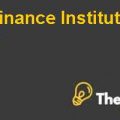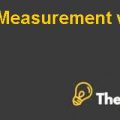
Investment Decision Rules
Graham, J., & Harvey, C. (2002). How do CFOs make capital budgeting and capital structure decisions? Journal of Applied Corporate Finance, 15(1), 8-23.
The paper summarizes the fact that the author has surveyed around 392 CFOs about the overall current practice of corporate finance. The findings of the survey have shown that the discounted cash flow method is the most widely used method for project evaluation. Payback method has also been a successful method. However, CFOs keep limited emphasis over the formal leverage targets which have shown the trade-off between the cost and the benefit. Moreover, large companies have been using the NPV and the DCF techniques while the smaller firms to generate capital reply on payback criterion.
The critical assessment of the article indicates that the CFOs have been depending upon the traditional methods of generating funds. In spite of various new techniques, the NPV and DCF are the major players in the market.
The article can be helpful because it has explained the two main theories of capital structure choice. Moreover, the trade-off theory has suggested that various companies have the optimal equity ratio which helps in determining the trading off the benefits against its cost. The paper is rather useful in aligning with the make capital budgeting and capital structure decisions.
Vanhoucke, M., Demeulemeester, E., & Herroelen, W. (2001).On maximizing the net present value of a project under renewable resource constraints. Management Science, 47(8), 1113-1121.
The paper basically discusses the resource constrained project scheduling problem that is being faced by the discounted cash flows. All the different activities of the resource constrained project scheduling problem have should certain resource requirements, which are known as the deterministic cash flow which can either be negative or positive. Moreover, the article also reflects upon the fact that the deterministic cash flows occur over the duration of different activities. The major objective is to schedule the different activities which are subject to the deadline within the net present value.
The critical assessment the article indicates that the paper exploits the idea of the positive cash flow which needs to be rescheduled as early as possible, whereas the negative cash flows should be scheduled late.
The article can be helpful in understanding and to find the best possible solutions where three propagation can be developed to tackle the problem. Furthermore, the future work has been rather concerned with the integration of the present method in a large system. The computational results have also allowed distinguishing the MA from the other heuristics. Moreover, the MA consistently performed sound in obtaining the highest number of solutions, the lowest value of, maximum and average deviation.
Rubinstein, M. (2003). Great moments in financial economics: I. Present value. Journal of Investment Management, 1(1).
The paper “Great moments in Financial Economics” basically considers the theorem that discusses the concept of investment management. The theorem that has been discussed is proven 20 years back by John Williams which is called the Law of Conservation of Investment Value. However, amendments have been made where the issue that is to understand the financial economies and the best results are yet to be seen and rather observed. It is one of the most difficult aspects, which remains unexplored. Financial economies have been a topic of discussion for a long time.
The critical assessment of the article is quite clear. In spite of various efforts, investments and decisions and optimistic goals have all been unable to find the best moments in the financial economies. Different factors have been considered rather than deciding the best moments based upon certain rules and regulations which show the biasness of the author.
The future learning for this concept is that the discussion would only be concluded once the different economist find the set objectives and criteria that can be sued to judge the results as per the requirements. Contributions have been made that need to be further studied.Annotated bibliography Case Solution
Stock and Bond valuation
Rom, M. C. (2009). The credit rating agencies and the subprime mess: Greedy, ignorant, and stressed? Public Administration Review, 69(4), 640-650.
The credit rating agencies (CRAs) have been important element of the subprime mess. The article therefore looks to describe the credit rating agencies as to what they are, what they do, what role do they play and how do they fit into regulatory systems. The paper also explains the mortgage securities that are the credit rating agencies outline and the rate which helps in the evolution as well. Furthermore, the paper discusses the three prime suspects where the paper also discusses the ignorance, incentives and the stress. The paper basically states that the three factors are necessary where the public officials have been slow to react...........................
This is just a sample partial case solution. Please place the order on the website to order your own originally done case solution.













